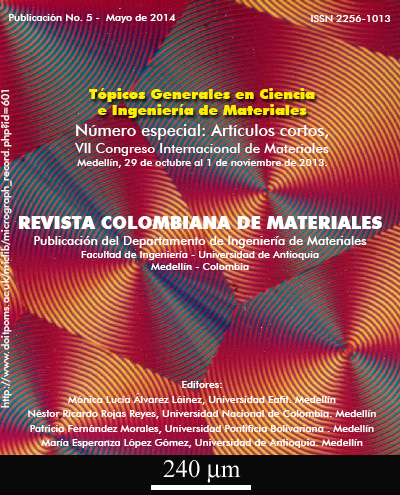.
DOI:
https://doi.org/10.17533/udea.rcm.19438Keywords:
Biosensor, Core-Shell, PVA, PLA, Cassava StarchAbstract
Downloads
References
“Microbiología de la carne”. [En línea] Consultado el 4 de noviembre de 2012<http://www.fagro.edu.uy/~alimentos/cursos/carne/Unidad%206/MICROBIOLOGIA.pdf>
Arango, C.M.; Restrepo D.A. “Microbiología de la carne”. [En línea] Consultado 4de noviembre de 2012. http://es.scribd.com/doc/8717475/Cap-1-MicrobiologIa-de-La-Carne
Ahindra Nag, Baishakhi Dey. “Computer-Aided Drug Design and Delivery Systems”. Cap 6, sub-temas 8 y 9: “Biosensores, Developmental History of Biosensors”. [En línea] Consultado el 4 de noviembre de 2012 <http://aplicacionesbiblioteca.udea.edu.co:2526/browse/computer-aided-drug-design-and-delivery-systems>
“Biosensores. Instrumentos analíticos que transforman procesos biológicos en señales eléctricas u ópticas y permiten su cuantificación”. Formato Power Point. [En línea] Consultado el 4 de noviembre de 2012. <http://www.slidefinder.net/b/biosensores_instrumentos_anal%C3%ADticos_transforman_procesos/tema7biosensores-alumnos/8018383>
“Carnes Rojas” [En línea] Consultado el 4 de noviembre de 2012. <http://www.unsa.edu.ar/biblio/repositorio/malim2007/10%20carnes%20rojas.pdf>








